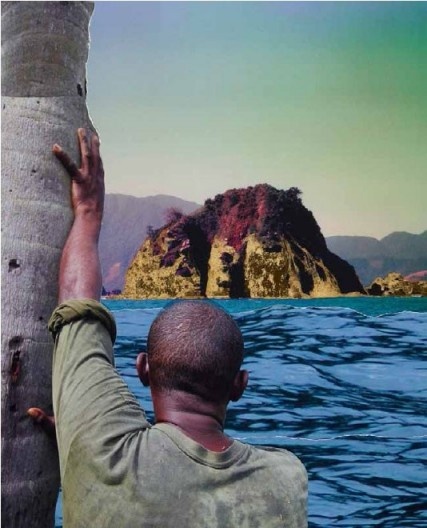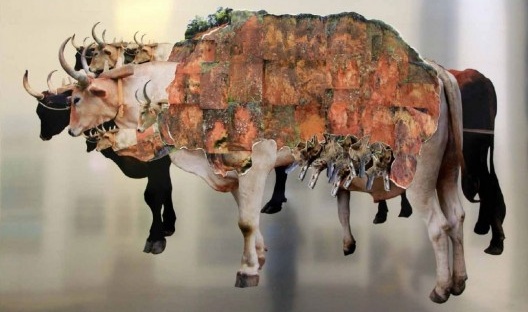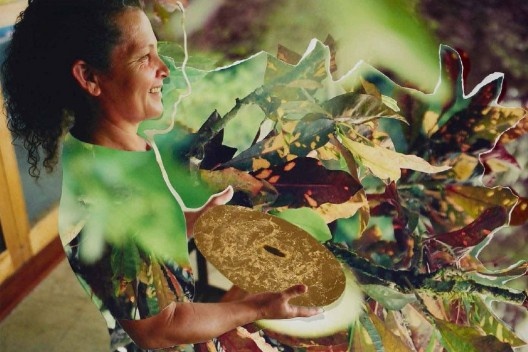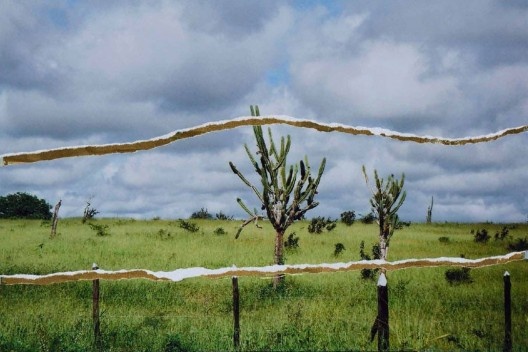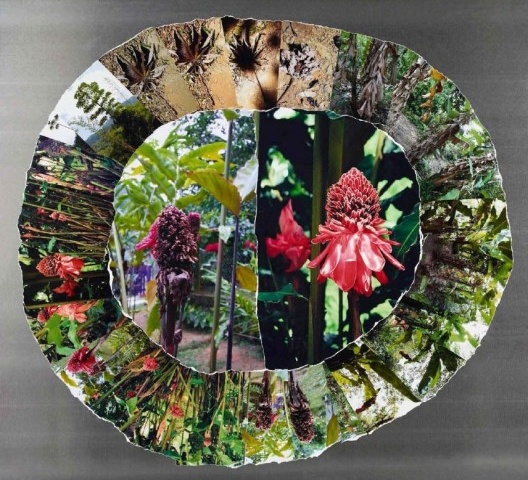Denise Milan’s new exhibition presents a body of work which has remained hidden for years despite the publication in 2007 of her book Mist of the Earth, which already revealed her interest and preoccupation with a fragile, threatened, changing landscape — the Brazilian rainforest. What emerges here, however, is not the Atlantic forest’s disintegration, but the vision of a fascinating world seen through the artist’s eyes and imagination. These photos — taken over the course of several years by Milan at Cairuçu near Paraty of the jungle, its vegetation, its coast bathed by the Atlantic Ocean and its people – have been used in a process of metamorphosis, going deeper beyond the species’ appearance to an understanding of the intimate fusion between nature and its inhabitants. The unstoppable tragedy that progress has wrought on the conservation of the Atlantic Forest’s biodiversity between São Paulo and Rio de Janeiro has in just a few places spared the exuberant beauty of the original virgin forest – although ‘virgin’ hardly applies, as the profanation of this privileged, unique natural environment began long ago with the arrival of the European conquerors in the 15th century.
Milan’s photos and collages are a document of a particular jungle enclave and its rich flora, but more fundamentally these works reveal the fertility of a natural habitat, including human beings, as some couples have given birth to tens of children, grand children and great grand children. This is the place where for centuries the Caiçaras have lived; they are the union of original, native blood with successive waves of colonisers; they have fused with nature and are respectful of her resources. The forest itself multiplies in abundance: a swift chain of life and death that reaches the perfect bal ance of the ideal garden where humankind has always placed its origin. Fruits, fallen trees and withered flowers give birth on the reddish soil to a new cycle of life in which the delicate bromelia (like a clepsydra, the ancient water clock) seems — in the water condensed in its leaves — to measure the eternal time of the forest. Water from the Atlantic and the rivers define the forest. It turns into a white mist that rises at dawn and forms a vast, silvery ‘White Sea’ — which is the meaning of Paraty, the Guarani word for the Caiçara’s historic town — and from the ocean comes the light and rain that fertilise the forest.
Denise Milan transforms this nearly extinct world into an offering tothe gods of fertility and abundance: Kurupí (the god of fertility) and Tupã [the supreme god in the Guaraní creation myth]. The infinite shades of green and the magnificent colors of the flowers in the artist’s fragmented collages are the key to not losing hop e in the recovery of this lost paradise. The forest’s essential stillness has the pictorial dimension of a still-life because nothing in it moves until a lone leaf vibrates for a moment which seems infinite, magically shaken by an intangible breeze which seems to have come from another dimension and to offer a way towards a new life.
About the author
Dr. Manuela Mena has worked in the Museo del Prado as Senior Curator of 18th Century Painting and Goya since 1996. As an Art Historian she has written on Italian and Spanish 17th Century painting and drawing, and she is interested in certain aspects of contemporary art in its relations to the art of the past.



